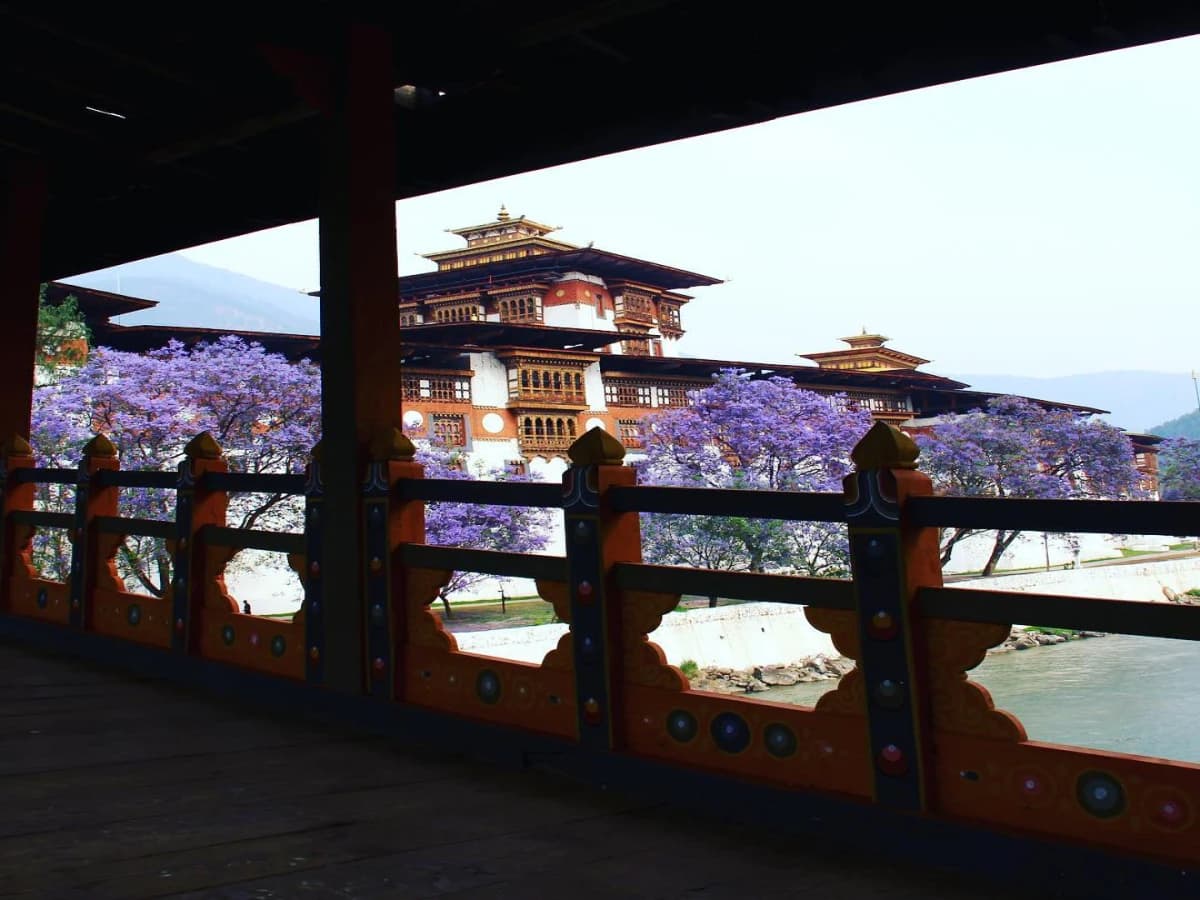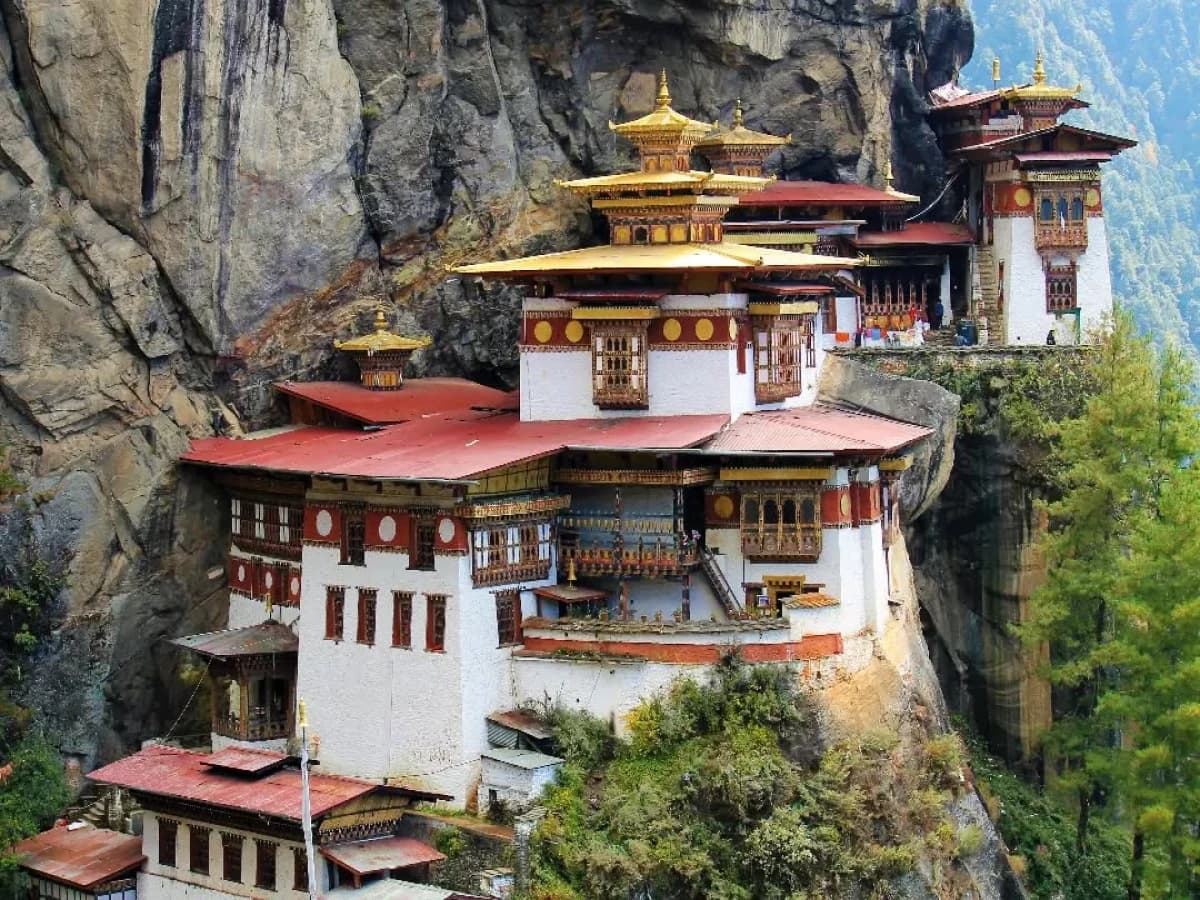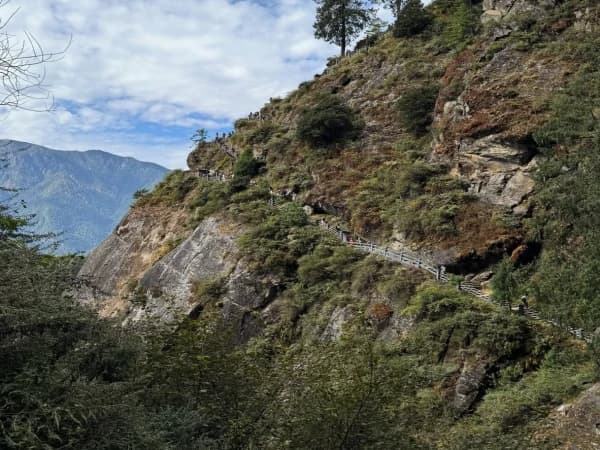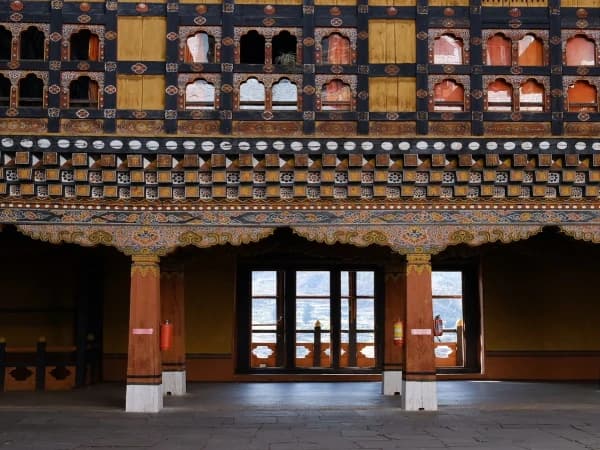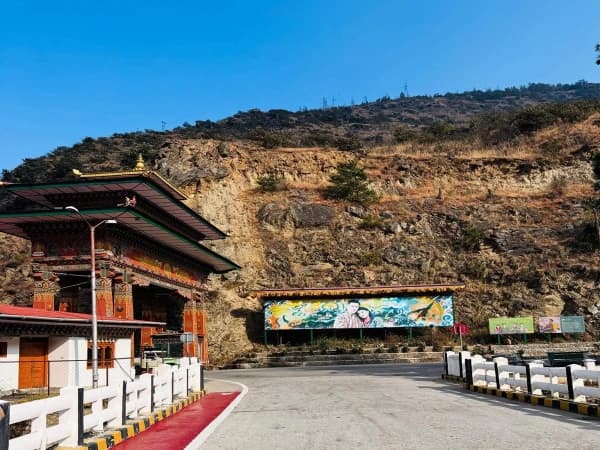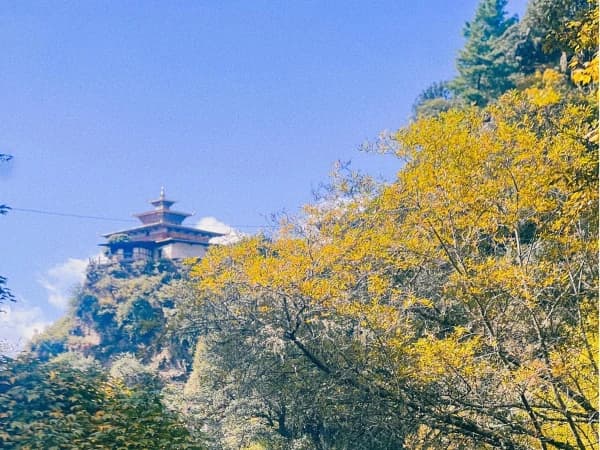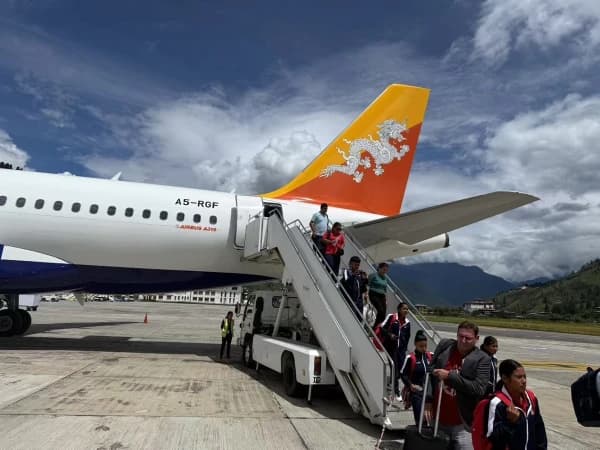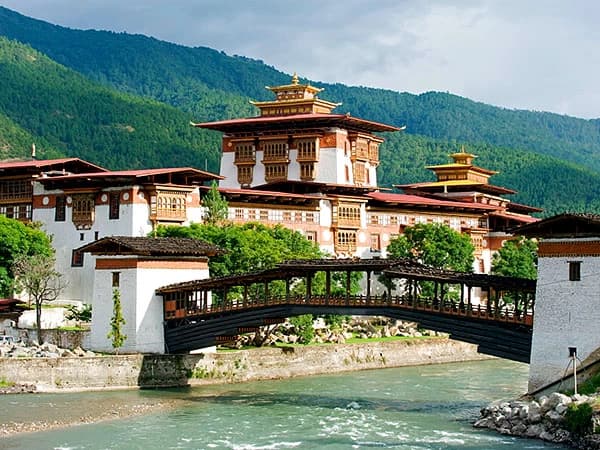The Bhutan Dragon Kingdom Tour presents an 8-night/9-day tour of the best of Bhutan, starting from Kathmandu, which serves as your gateway to mystical Bhutan and includes a flight over the Himalayas from Kathmandu to Paro.
And then Thimphu, visit cultural highlights in Thimphu and Punakha, return through Paro's sacred cliff-hanging Tiger's Nest Monastery only and return to Kathmandu. You will delve deep into the peaceful valleys, age-old dzongs, and living Buddhist culture of Bhutan, but not forgetting to take in some grand mountain views, rich local culture, and indelible scenery.
Highlights of Bhutan Dragon Kingdom Tour 9 Days
- You will first land at Kathmandu, which is the bustling city of Nepal.
- Fly or transfer into Paro, Bhutan, and then proceed directly to the country’s capital of Thimphu.
- Discover Thimphu, a city with an enormous statue of the Buddha, crafts, shops, and everyday local life.
- Scenic vehicles travel over Dochu La Pass with spectacular views of the Himalayas.
- You will stay in Punakha, where you will have a chance to see the dzong (fort) and enjoy walking in the river valley scenery.
- Return to the Paro valley and tour some of its temples, dzong, and market.
- Trek to Bhutan’s most famous cliff-temple, the Tiger’s Nest monastery (Taktsang).
- Experience much of Bhutan’s amazing culture, explore the intricate dzongs and temples, meet friendly locals, and switch between stunning alpine scenery on awesome drives.
- Head back to Kathmandu for one last night before you’re dragged kicking and screaming to your flight.
- There is nowhere else like Bhutan; you will soak up the chaos of Nepal and the peace, cultural, and natural serenity of Bhutan.
Trip Introduction- Bhutan Tour 8 Nights 9 Days 2026/27
The adventure starts off in Kathmandu, where ancient temples, bustling markets, and a generous dose of Nepalese hospitality all beckon. After you land and spend the night in Kathmandu, you’ll head out on an adventure over the border to Bhutan, a country so unique that it leaves you feeling like you’re on another planet. Bhutan lies deep in the Himalayas, and yet even deeper in tradition, nature, and spiritual peace. Valleys are green, peaceful temples, and you can sense culture, unsullied.
You will visit three of the country’s most iconic places on this tour: the capital Thimphu, Punakha (dominated by its historic dzong and rivers), and Paro (home to the famous cliff-hanging monastery).
You experience a lot in your days in Bhutan: from Thimphu’s mix of the modern with ancient to Punakha’s pristine valleys and magnificent fortresses. You will also visit Paro, resting blissfully and adventurously. A highlight is a morning hike to the sacred Tiger’s Nest Monastery (Taktsang), which clings high up on a rock cliff, affording spectacular views and plenty of contemplation.
You will enjoy the local bhutanese hospitality as the tour winds its way across mountain passes, with plenty of sightseeing and slower moments to soak it all in during the trip. The contrast between Kathmandu and the tranquil valleys in Bhutan makes this trip unique. And when you land back in Kathmandu at the end of your trip, you will have gained memories of a peaceful monastic vibe, remarkable mountainous views, and a land that cherishes natural surroundings as well as tradition.
The Benefits of Booking Your Trek with View Nepal Treks
Professional Guide and Driver: Experienced Bhutanese licensed guide and good driver with a comfortable, safe vehicle that knows the way around, including where to find clean western-style toilets.
- Paperwork at ease: We take care of all visa, permits, and SDF paperwork while you enjoy your holiday.
- Small Groups: A smaller group or private tours for more personal attention, flexibility, and fewer people at the site.
- On-Trip Support: The real people that we have working in our communities, are happy to work hard for you on your next tour with us, while full-time support staff is ready and waiting if anything unplanned should come up last minute.
- What You See Is What You Get Pricing: Absolutely no hidden fees here.
- Comfort and Safety: Clean and well-maintained vehicles, safe driving routes, comfortable lodgings on the rugged slopes of Bhutan.
- Logistic Logistics: Great planning for transfers, sightseeing, and stoppages throughout the tour.
Is the 8 Nights / 9 Days Bhutan Dragon Kingdom Tour the Right Fit for You?
- YES, if you're interested in experiencing a rich culture: You'll experience old monasteries and sacred temples (dzongs) while enjoying Bhutan's "high value, low volume" philosophy that makes it so unique.
- NO, you're not up to moderate exertion levels: Expect to walk and hike and change elevations, so being in good shape will help you maximize the experience.
- YES, you're fine with scenic drives and short flights: There are mountains to cross by road between Paro, Thimphu, and Punakha that make the travel part of the experience.
- NO, you are just looking to take it easy and travel slowly: There will be rest days, but a number of locations must be cycled through, so it's going to be somewhere in between.
- YES, if you're comfortable with the cost-structure: The cost of Bhutan's fees (visa, permits, sustainable development levy) and the tour inclusions mean you will be paying for a premium, meaningful experience.
- NO,if you're interested in fast-paced nightlife or crowds: Bhutan is peaceful, culturally rich, low-volume by design, and the expectation of caring about advocating while enjoying a destination means it is not party-tourism focused.
Cost of Bhutan Dragon Kingdom Tour 9 Days 2026/27
The cost of your Bhutan Tour: 9 Days depends on the size of your group. Bhutan has its own innovative tourism policy based on the principles of high-value, low-impact travel, which guarantees that every guest who enters the country does so in a manner that is impactful and in harmony with culture. This is why Bhutan tours are sold as a complete package, including everything from accommodations to food, licensed Bhutanese guides, and private cars/drivers for the duration of your stay.
Solo travelers are charged USD 2550 for the Bhutan tour. This rate is ideal for the independent traveler who wants flexibility and personalized service from a local guide. Going solo means that you can discover Bhutan in your own time, and the entire tour is tailor-made to fit in with how long you have and what you want to see.
If there are a minimum of less than people in a group, then the tour price will be USD 2450 per person. It’s perfect for couples, friends, or a small family looking to travel together but also wants some separate comfort. The low cost also means the service need not suffer in attending the trip.
If there are 4-7 travelers of medium size group, the price will be slightly lower at USD 2400 per person. They will be charged less and still receive personalized services, have enough room in the vehicle, and good coordination on the way.
The best price is for a large group of 8-15 people and the price is USD 2300 per person. Another plus in travelling with a larger group is that you can share your culture more efficiently, there are more people to share the stories and spiritual experiences with.
Bhutan Dragon Kingdom Tour Package Cost for All Nationality
|
Group Size |
Price per Person (USD) |
Inquiry Available |
How to Book? |
|
1 Pax |
2550 |
Yes |
Contact Us |
|
2-3 Pax |
2450 |
Yes |
Contact Us |
|
4-7 Pax |
2400 |
Yes |
Contact Us |
|
8-15 Pax |
2300 |
Yes |
Contact Us |
Important Notes to Know for 2026 Bhutan Visit
- The government of Bhutan has implemented a tourism policy called "high‑value, low‑impact," which means tourists must pay a daily tourism tariff, i.e., development fee.
- This daily fee is called the Sustainable Development Fee (SDF) (or formerly minimum daily package), and it applies to almost all foreign nationals (except Indian, Bangladeshi, or Maldivian) for tourism visits.
- As of recent updates, the SDF is now USD 100 per person per night until at least August 31, 2027, for "all other tourists" (other than SAARC nationalities) visiting Bhutan.
- For SAARC nations (ex., India, Bangladesh, Maldives), and others, different (much lower) permits or tariffs.
How Should You Prepare for the Bhutan Dragon Kingdom Tour 9 Days?
- Book Early and Confirm Visa and Tour – Make full payment to tour operators to host you in Bhutan and receive your visa/permit; pay daily sustainable‑development fee.
- Choose the right time: Visit in spring (March‑May) or autumn (late Sept-Nov), when the air is fresh, and the sky is clear.
- Arrange documents and insurance: Confirm your passport has at least six months' validity, purchase travel insurance, and save copies of important documents both in digital and physical form.
- Pack right: Pack layers, including a fleece or jacket (as altitude can vary) and a wide‑brim hat; choose comfortable walking shoes, sunscreen, and a plug adaptor.
- Be respectful of local customs: When you visit temples/ monasteries, follow the dress code (shoulders and knees must be covered); remove your shoes whenever the host asks you to.
- Expect transport delays: Flights into Paro can be conditional on the weather; plan an allowance for extra time and take what you need in your carry-on luggage.
- Health and altitude prep: Bring required prescription medicines, anti‑altitude if applicable, and basic first‑aid supplies.
- Money and communications: ATMs in main centres, but bring some cash; get a local SIM if you want reliable mobile data.
Easy Customizable Dragon Kingdom Bhutan Tour
Explore the mystical “Dragon Kingdom” of Bhutan on our simple‑to‑personalize tour, along which you plan the trip according to your interests. Be there for the culture or just to take in the sights – a completely customisable itinerary, travel dates to suit you, and curated accommodation and activities await. Benefits of a tailor-made itinerary are:
- You set your own pace more time in low valleys or maybe add extra trekking days.
- Choose the places you love old monasteries, village communities, or high mountain passes.
- It’s your choice to stay your way luxury lodge, a cozy guesthouse, or a family‑friendly hotel.
- Hassle-free travel let our team manage the nuts and bolts, so you can focus on what matters.
- With your customized tour, you will see the trip best for you that fits in with how you like to travel and use your time doing it, while making once-in-a-lifetime memories. Talk to us about creating your custom Bhutan adventure.
Kathmandu to Kathmandu Bhutan Tour
Begin and conclude in Kathmandu on this exclusive journey to Bhutan: Picture the golden opportunity of starting your trip with a plunge into exuberant Nepal and its lively culture. Then crossing over to the virtually untouched, divine landscapes of "the Land of Thunder Dragon.
It's the trip for you if an easy Bhutan Tour that starts and ends is something you are looking for. You begin from hectic Nepali streets, through to distance Himalayan monasteries, from lively markets through lakeside vistas. A few days later, you'll return to Kathmandu enriched, relaxed, and enormously inspired.
Since the travel ends and starts in a single city, you spare yourself from additional logistics associated with getting to new places on your own and are able to spend more time exploring, and you come away with an effortless, rich-in-stories experience. It's sophisticated, efficient, and emotionally rewarding, all that any conscious traveler really wants.
Travel Insurance: Why It’s Important for Bhutan Tour?
Medical emergencies and evacuation
Bhutan presents health risks in its remote mountain areas and also with high-altitude treks, due to the extreme paucity of medical facilities. Travel insurance also covers you if you fall ill, have an accident, or need to be emergency-evacuated (heaven forbid that might happen), so you are covered financially in terms of being able to afford hospital treatment or airlift services.
Trip cancellations or interruptions
There could be a natural disaster or bad weather-related delays, a personal emergency that requires you to cancel or cut your Bhutan trip short. Insurance covers non‑refundable expenses (flights, hotels, jobs) to protect your investment.
Loss, delay, or theft of private baggage and belongings
While traveling through Bhutan, it is possible for you to lose your baggage, get your personal belongings stolen, or experience delays in transit in some very isolated areas. Replacement of the items you need if a common carrier loses your bags, and reimbursement for any loss, regardless of whether or not you were at fault, including baggage that is damaged, vandalized, or stolen by the government, as well as lost due to a natural disaster.
Adventure activities and terrain‑related risks
You can hike, trek, and tour through rough terrain in Bhutan. These present risks of altitude sickness, slipping, or needing to be rescued from a remote location. If you choose insurance with “adventure activities” cover included, then they’re covered.

